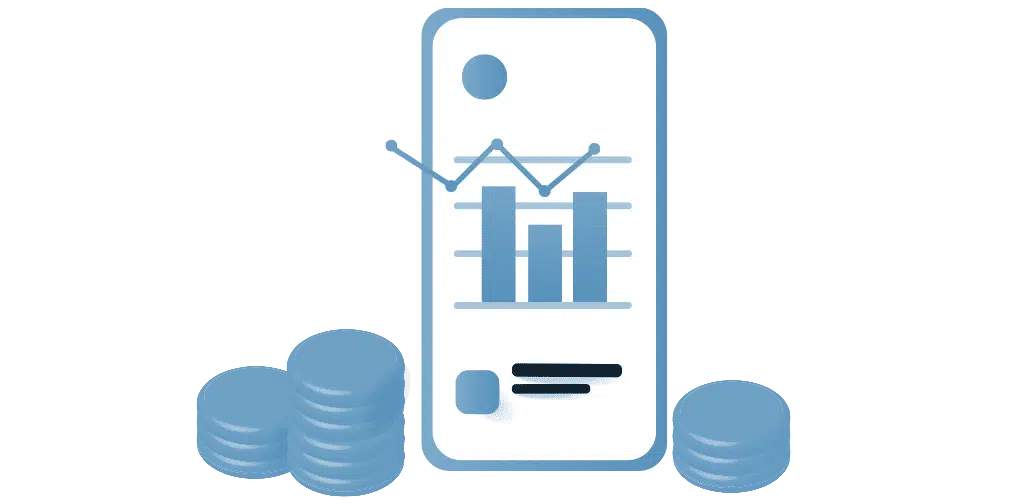Sharpe Ratio


See a trading opportunity? Open an account now!
Sharpe Ratio Definition
The Sharpe ratio is a performance metric that allows investors to compare the returns of different portfolios relative to their risks. The ratio highlights volatility or standard deviation as a major source of risk for many portfolios, and it allows investors to factor it in when calculating the suitability of different investments. Sharpe ratio was named after William Sharpe who developed it in 1966. Sharpe is an American economist who won the Nobel Memorial Prize in Economic Sciences in 1990.
Sharpe Ratio Calculation – The Sharpe Ratio Formula
Sharpe ratio is calculated using the formula below:
Sharpe ratio = (Portfolio return – Risk-free rate)/Portfolio standard deviation
The formula denotes that the Sharpe ratio measures the excess return you earn by taking on extra volatility. The Portfolio return is the percentage return that a portfolio achieves over a defined duration of time.
The risk-free rate is usually the return generated by traditional ‘safe’ assets such as government treasury bills. The risk-free rate is used in the formula to assess how well you are rewarded for including additional volatility in your portfolio.
The standard deviation shows how much the value of a portfolio can go up and down. Thus, the standard deviation is basically the volatility of a portfolio. The Sharpe ratio, therefore, helps investors to assess the performance of a portfolio by taking into account the risks absorbed by the investor.
How to Use the Sharpe Ratio?
Investors always seek investments that will give them as much profit as possible, but with the lowest risk possible. The Sharpe ratio is an excellent metric for rating risk-adjusted returns of different portfolios.
Let us look at a Sharpe ratio example. Consider two portfolios: A and B; and treasury bills are yielding 10%. A has a return of 20% and a standard deviation of 5%. A will have a Sharpe ratio of 2 (20%-10%)/5%. B has a return of 30% and a standard deviation of 20%. B will, therefore, have a Sharpe ratio of 1 (30%-10%)/20%.
This means that while B generated more returns than A, it did so by taking more risk in the market. As such, the Sharpe ratio can explain whether the additional return is due to making smart investment decisions or simply a result of taking on more risk.
The Sharpe ratio is also used by investors to make decisions on the composition of their portfolios. Consider a portfolio mix that is comprised of 50% bonds and 50% equities (large-cap stocks), with a Sharpe ratio of 1.5.
Suppose an investor wishes to add small-cap stocks and achieve a portfolio mix of 40% bonds + 40% large-cap stocks + 20% small-cap stocks. If the resulting Sharpe ratio is 2, it would mean that this could be an ideal investment decision. While adding a new asset class to a portfolio increases risk, a higher Sharper ratio implies that it is a risk worth taking.
On the other hand, if you are changing the composition of your portfolio and it results in a lower Sharpe ratio, it simply means that you are taking more risks without any reasonable reward. Thus, the Sharpe ratio can guide investors toward making investment decisions that will help them achieve optimal risk/reward propositions.
Despite its many benefits, the Sharpe ratio also has its limitations. First, it is a backwards-looking performance metric. The Sharpe ratio is calculated using historical data, and this misrepresents risk in the market.
Markets are dynamic, and past performance is no guarantee of future investment results. Therefore, being aware of past risks is no guarantee of a certain level of safety in the future.
The use of standard deviation as a representation of risk also assumes that investments have a normal distribution curve. In reality, this is not the case because there are usually sudden price spikes that happen sometimes. Such skewed distributions may result in a Sharpe ratio that does not represent the true risk picture of a portfolio.
Sharpe Ratio vs Treynor Ratio
Both the Sharpe ratio and Treynor ratio are performance metrics used to compare returns of a portfolio on a risk-adjusted basis. The two ratios are usually viewed as different variations of each other, but they have different calculation methods.
The Sharpe ratio divides excess return by a portfolio’s standard deviation, whereas the Treynor ratio divides excess return by a portfolio’s beta.
Beta is a measure of a portfolio’s volatility and risk compared to the overall market. Therefore, the Sharpe ratio compares the return of a portfolio relative to its own risk, whereas the Treynor ratio measures the excess return realized for each unit of risk taken.
Final Words
Despite its few limitations, the Sharpe ratio is an excellent metric for assessing the suitability of certain investment decisions in the market. The ratio can help you determine whether you are taking reasonable risks in the market.
AvaTrade provides comprehensive educational materials to help you expand your investing knowledge and skill. Browse through the AvaTrade Education section and learn how to become a better trader or investor. You can then open a demo or live AvaTrade account and start trading when you feel ready to explore the many trading opportunities!
See a trading opportunity? Open an account now!
FAQs
What is the Sharpe Ratio?
The Sharpe ratio is a performance metric that compares an investment’s return to its own risk.
What is a Good Sharpe Ratio?
Generally, a Sharp ratio of between 1 and 2 is considered good; a ratio of between 2 and 3 is considered very good, and a ratio of above 3 is considered excellent.
How to Calculate Sharpe Ratio?
Sharpe ratio = (Portfolio return – Risk-free rate)/Portfolio standard deviation
** Disclaimer – While due research has been undertaken to compile the above content, it remains an informational and educational piece only. None of the content provided constitutes any form of investment advice.












